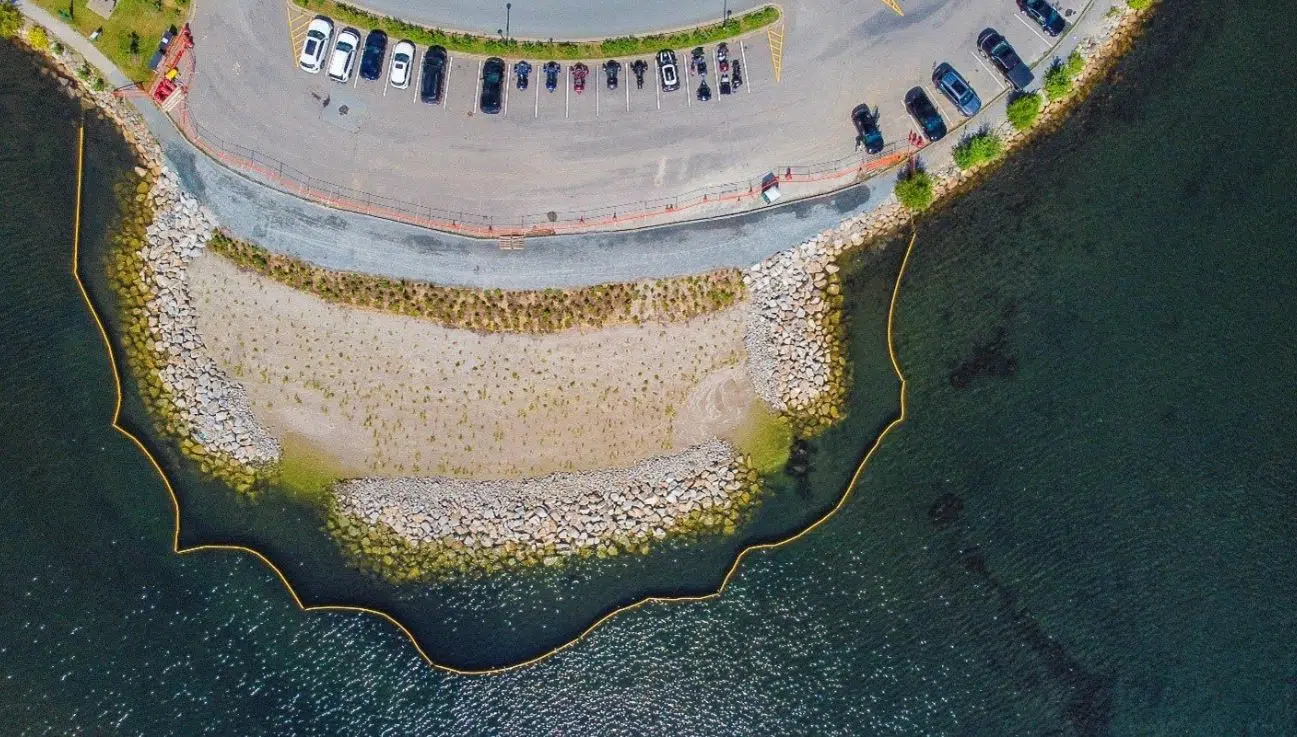
An overhead look at Coastal Action's living shoreline in Mahone Bay, NS. Photo: Coastal Action.
The Municipality of the District of Lunenburg (MODL) has ratified its coastal protection guidelines, which will guide what can and cannot be built in coastal areas.
“This marks a significant step forward in safeguarding our coastal communities for future generations,” said Mayor Carolyn Bolivar-Getson. “These new coastal regulations reflects our commitment to addressing the challenges of climate change and ensuring that our coastlines remain resilient and protected. We have worked closely with our residents and experts to develop these regulations, and their input has been invaluable in shaping a sustainable future.”
The MODL along with many other municipalities was left scrambling earlier this year when the province abandoned it’s plans to implement province-wide coastal protection legislation.
Bolivar-Getson says that during the public consultations, most people favoured environmental protections. Still, there were some property owners concerned about what it could mean for property values.
“Climate change is real and there are real risks associated with it, so we don’t want to be setting people up for failure when they build,” she said.
As part of the MODL’s new regulations, they have established three types of coastal land in need of protection, including; erosion risk areas, flood risk areas and wetlands.
Each designation has specific guidelines on what is permissible and what is not. In many cases, properties can fit into more than just one of the categories, in which case the regulations for all applicable designations would apply.
As part of the rollout of the MODL coastal protection regulations, an interactive map where you can check properties’ coastal protection designation has been launched.
The regulations passed will only impact new buildings, existing structures will not be impacted.
Erosion risk areas
• No development permitted within 30 m of the top of the bank due to erosion risk.
• A buffer of vegetation must be maintained in a natural state within 15 m of the top of the bank.
• Erosion risk studies may allow reductions to the 30 m setback.
• Specific exemptions and allowances apply.
Flood risk areas
• Habitable spaces in new residential structures must be elevated above 3.97 m average sea level.
• New institutional uses are prohibited within the Flood Risk Area.
• New habitable spaces in residential buildings may be elevated through building design, grading, or other means.
• Specific exemptions for existing structures, small additions, and accessory uses apply.
Wetlands
• No development permitted within 30 m of wetlands along the coast.
• A buffer of vegetation must be maintained in a natural state within 30 m of wetlands.
• Exemptions for existing structures and certain accessory uses applies.
You can find more details on the MODL coastal protection regulations on their website.









